Unlike a domestic pigeon which you may keep for a pet, feral pigeons live in the wild, both in urban and rural areas.
If you happen to love pigeons and want to know more about them, there’s a lot to know about these feral pigeons that is likely to be interesting to you.
If you keep pet pigeons, it’s nice to know a little more about how they live in their natural environment so you can provide the best care possible for your bird.
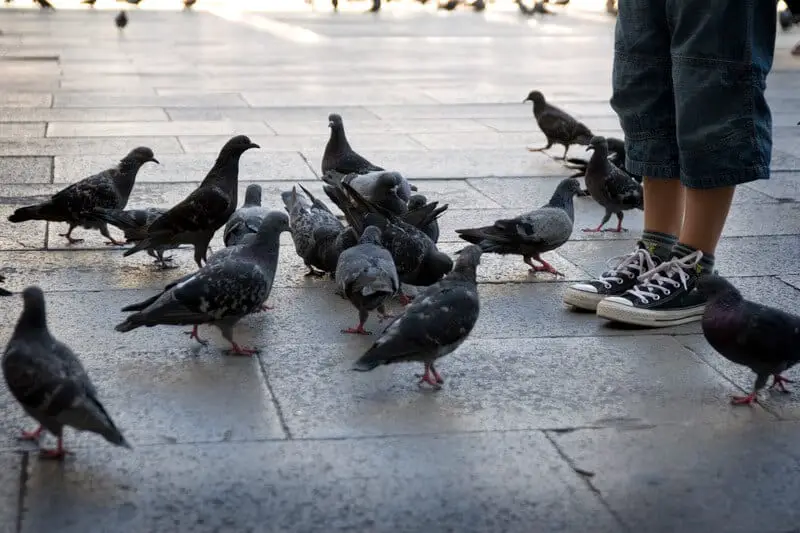
There’s so much to know so let’s get started with this complete guide to feral pigeons.
Other Names for the Pigeon
When you hear about pigeons, you may hear them being called by several different names.
Pigeons also go by the names of rock dove, rock pigeon, blue rock pigeon and wild rock pigeons.
Their name comes from the Latin word for dove, which also means a bird of blue or grey color.
While there are about 350 recorded types of pigeons, the most common is the feral pigeon, or wild pigeon.
Estimates put the numbers at 10 to 15 million in Europe, with many more spread out across other places in the world.
Wild Pigeon or Feral Pigeon?
While most people use the terms “wild pigeon” and “feral pigeon” interchangeably, there is a difference that separates them from one another.
Wild pigeons are generally those found living in coastal areas, while feral pigeons are those living in urban areas, like the city you live in.
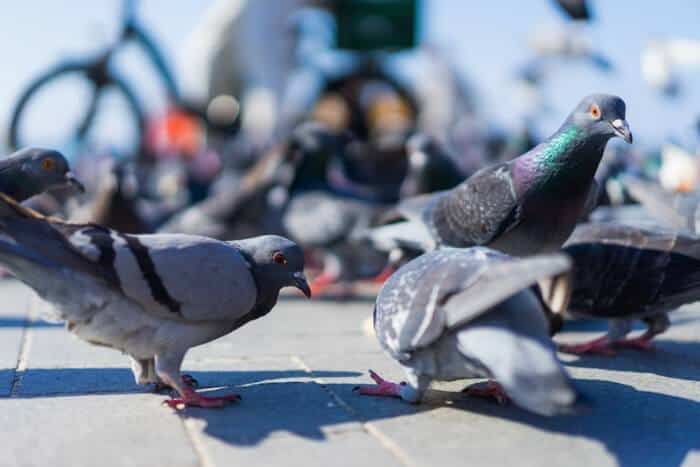
In other words, feral pigeons live in close proximity to humans, while wild pigeons live in rural areas with smaller human populations.
The Feral Pigeon’s Appearance
Pigeons, like every other species, vary a bit in size and shape.
· On average, they are 32 to 37 centimeters in length.
· They have a wingspan of 64 to 72 centimeters.
· Pigeons range in weight from about .25 to 2.2 kilograms.
· Pigeons are usually a grey-blue color with green or purplish feathers in the neck area.
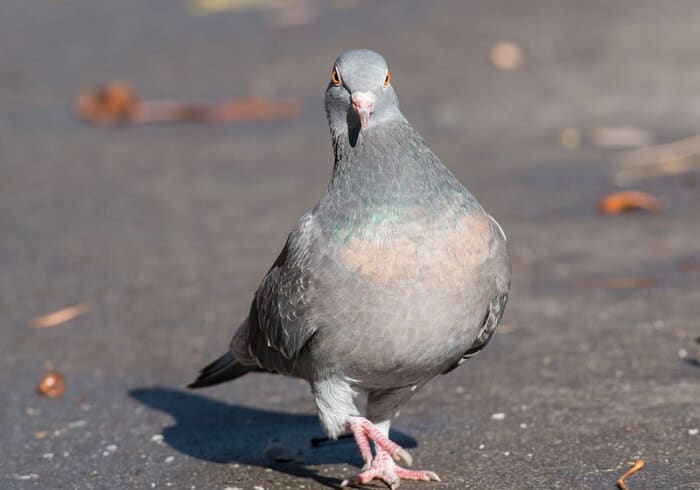
· Juvenile penguins have a brownish eye color, while adults have a red color around their eyes.
· A pigeon’s beak is usually black in color, while their legs and feet are usually red.
· They often have white feathers on their lower backs and black bands on the ends of their wings.
Of course, there is some variation to this and not all pigeons look exactly the same.
The Diet of a Feral Pigeon
If you keep pigeons as pets, you have a lot more control over what they’re eating. The ideal diet for a pigeon is a mixture of seeds, grains, protein, fruits and vegetables, which is easy to do with pre-made mixes and pigeon pellets, supplemented with fresh produce.
Feral pigeons, on the other hand, don’t have this kind of access to food. In general, they eat mostly seeds, insects and sometimes worms.
Feral pigeons also eat waste, such as food tossed on the ground or into garbage cans by humans.
Most experts caution against feeding feral pigeons because it encourages their population and isn’t a healthy diet for them.
Of course, pigeons also need access to a water source so you may see them near lakes or rivers in urban areas and fountains in the cities.
How Long Do They Live?
Pigeons in captivity, such as those you keep for pets, naturally live longer than feral pigeons because they are safe and well cared for in your home. A pet pigeon will typically live from 9-15 years however many pet pigeons have lived as long as 20 years.
However, feral pigeons have a lifespan of only three to six years. They may live longer in the wild if predation is low and humans leave them alone.
Feral pigeons tend to live longer in areas where there are fewer humans, such as farms or suburbs, rather than downtown cities.
The Reproductive Cycle of a Feral Pigeon
Breeding peaks in summer and spring, but pigeons tend to breed year-round. In general, feral pigeons typically build their nests on flat rooftops or along rocky coastlines.
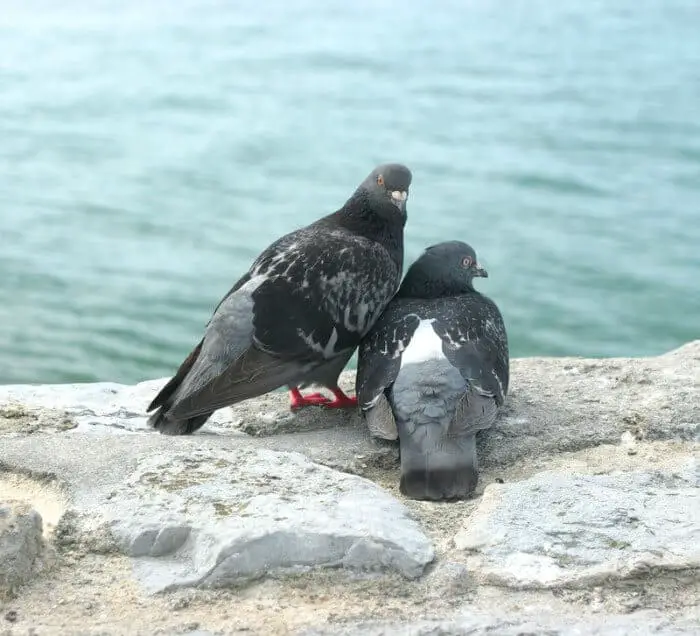
The male and female pigeon build the nest together, mate for life and remain monogamous to one another.
Usually, the mother pigeon lays two eggs per brood and the mother and father take turns incubating the eggs, with the mother taking care of them from midafternoon, through the night and into the mid-morning.
The father takes over from mid-morning to midafternoon so the mother pigeon can rest and eat.
The eggs are usually white, though they can sometimes be darker in colder climates.
Once the babies hatch, both parents take care of the babies, feeding them crop milk and watching over them until they’re ready to leave the nest.
The Life Cycle of the Feral Pigeon
Most pigeon babies leave the nest after about 30 days and usually look fully grown and much like adult pigeons when they fly away. This is why it’s rare to see a hatchling or baby pigeon.
Pigeons reach sexual maturity at approximately six to seven months of age and can begin breeding at the time, though it’s more common for them to wait until they’re about a year old to mate and reproduce.
In some cases, females who mate before they are a year old, only one egg is produced per brood, instead of the average two eggs.
Once the babies leave the nest, they start the cycle over again when they find their mate and raise their own hatchlings.
Predators of the Feral Pigeon
As mentioned above, humans pose the biggest threat to feral pigeons. This is because many cities take pigeon control measures since they see the birds as pests and take action to get rid of them.
Feral pigeons that live in less populated areas may be safer from humans, but there are other predators that they have to be on the lookout for.
The peregrine falcon is the pigeon’s main natural predator because they make their home in many of the same places that pigeons do, especially rocky coastlines.
The sparrowhawk may also hunt feral pigeons, though not to the same degree as the peregrine falcon.
The Flight Characteristics of a Feral Pigeon
While you may often see feral pigeons on the ground scavenging for food, they are quite fascinating fliers.
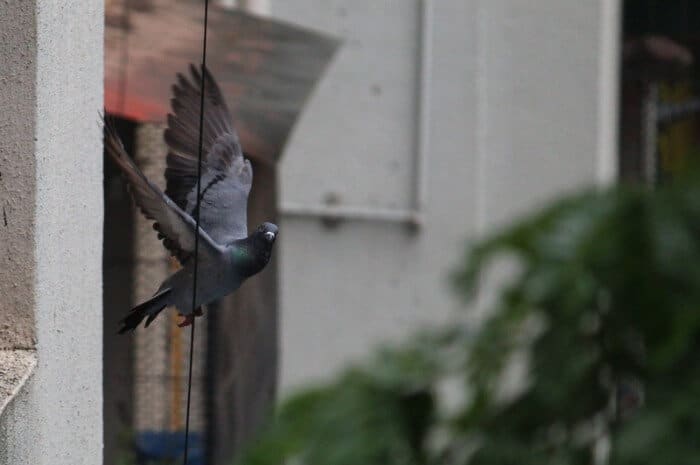
Pigeons can fly up to altitudes of 6,000 feet and can reach average flight speeds of nearly 78 miles per hour, with the record being 92.5 miles per hour. Pigeons are able to fly between 700 and 800 miles per day, though they usually don’t do this.
Pigeons are good navigators and were used for many years to carry messages around the world.
Other Facts about Feral Pigeons
Pigeons are very intelligent birds and can recognize themselves in the mirror, as well as being able to learn the alphabet.
Pigeons in the wild retain this intelligence, though you may find it hard to see it since they aren’t performing any of the wonderful things they can do, such as helping predict the weather, assist in search and rescue missions at sea and carry messages across enemy lines during wartime.
Read our artcicle on pigeon facts for more pigeon trivia.
Protecting Feral Pigeons
Most of the time, people are looking for ways to get rid of feral pigeons. Despite common belief, pigeons are pretty clean animals and don’t carry the diseases that many people think they do.
If their population grows too large, control can be done in humane ways to protect the feral pigeons and their way of life.
Contacting your local humane society or animal control officer is better than other methods, which can actually kill feral pigeons.
Feral pigeons live a fascinating lifestyle and there’s a lot to learn about them, whether you’re just curious or you want to try keeping pigeons as pets.
Taking care of the feral pigeon is as important as caring for any other animal and you can help by taking a stand for them.
